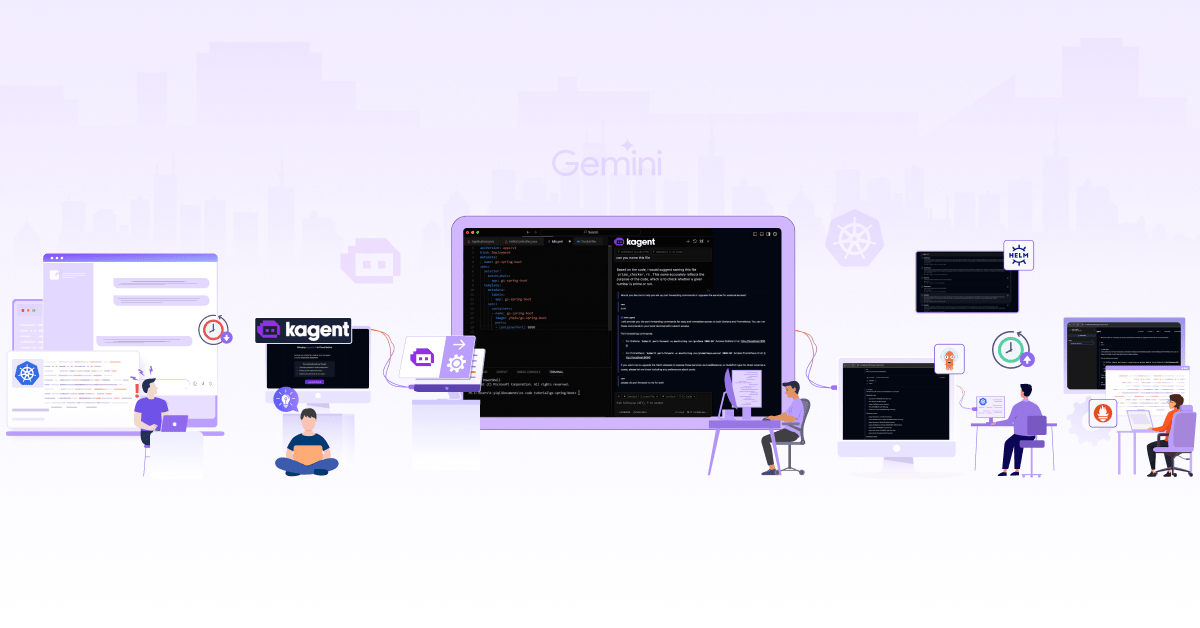
On-Premise AI vs. Cloud AI: Making the Right Infrastructure Choice

Artificial intelligence (AI) has become a critical component of modern business operations. As it becomes more prevalent, making the right infrastructure decision, on-premises, in the cloud, or a hybrid of both, has become essential. This decision has significant implications for cost, scalability, security, and compliance. According to the Evans Data report, nearly 9.7 million developers are currently running their AI workloads in the cloud, making it the leading deployment model ahead of on-premises and edge computing.
Each model has its own set of benefits and challenges, and the best one is determined by organizational needs, workloads, and long-term goals. When adopting AI infrastructure, enterprises must first decide on their primary deployment model approach and then evaluate the specific details of implementation within that strategy.
In this blog post, we will understand the different AI infrastructure landscapes, discuss the benefits and challenges of cloud and on-premise AI setups, outline practical decision-making criteria, and provide hands-on advice to guide you in selecting a deployment model that is tailored to the organization’s unique needs. We’ll also discuss hybrid models and how they create a dynamic platform for most organizations that are facing the complexities of AI at scale.
AI infrastructure deployment models
When implementing AI infrastructure, organizations often choose one of three basic deployment models:
Cloud-based AI infrastructure: This model leverages distributed computing resources from leading cloud providers like AWS, Google Cloud, and Microsoft Azure. These providers offer virtualized resources, GPU clusters, AI-specialized accelerators (such as TPUs and custom ASIC chips), supporting on-demand provisioning and managed AI services that abstract away the underlying complexity. This setup allows businesses to perform AI experiments with minimum upfront cost. The cloud structure can be provisioned in various ways, such as shared, private, and dedicated.
On-premises AI infrastructure: In this model, specialized hardware is deployed to the organization’s data center. It includes high-performance GPU servers, AI-specific accelerators, and the associated infrastructure of power, cooling, and networking needed to handle demanding AI workloads. Having an on-prem infrastructure means full control of the resources and is generally sized for predictable workloads or entities with stringent regulatory requirements (e.g., finance, healthcare, defense).
Hybrid approaches: The hybrid model integrates both cloud and on-premises resources, enabling organizations to optimize for different workloads with unified orchestration across environments. Organizations might train models in the cloud but deploy inference at the on-premises or edge devices. It enables businesses to balance performance, compliance, and cost-effectiveness, especially for complex regulatory or multi-region deployments.
We will discuss the cloud and on-prem infrastructure in detail later in the article.
Current market trends and adoption statistics
Existing market trends suggest a significant migration of businesses towards cloud deployment for initial AI deployments due to its ease of integration and scalability. However, for certain use cases and more advanced AI implementations, on-premises and hybrid strategies remain highly relevant.
- IDC predicts that by 2027, 75% of enterprises will adopt a hybrid to optimize AI workload placement, cost, and performance.
- Industries with high sensitivity to latency or regulation, such as finance, healthcare, and manufacturing, continue to invest in modernized on-prem infrastructure for long-term control and compliance.
These predictions highlight that the decision between on-premise and cloud AI infrastructure is not straightforward. It is about selecting the best option for your organization’s unique context, requirements, and strategies.
Cloud-based AI infrastructure: The case for elasticity
Cloud AI infrastructure is the de facto choice for most organizations starting their AI journey. Its key features, such as scalability, flexibility, availability of hardware, managed services, and affordability, enable teams to focus on building models instead of managing infrastructure.
Scalability and flexibility
AI workloads typically require instant bursts of computation, particularly during model training or mass experimentation. Cloud infrastructures enable this by providing on-demand GPU allocation, enabling teams to scale from prototyping to production without hardware costs. This flexibility is especially useful in early-stage AI initiatives or PoC deployments.
Access to the latest hardware
Cloud platforms provide access to cutting-edge hardware like the latest GPU architectures (e.g., NVIDIA’s H100 GPUs and Blackwell series) and specialized AI accelerators (e.g., AWS Trainium/Inferentia, Google’s TPU v4 pods) through managed services, eliminating the complexity of hardware procurement and deployment. This approach ensures future proofing and mitigates the risk of hardware obsolescence, as upgrades and maintenance lie with the cloud provider. This is particularly suitable for training large language models or conducting intensive research.
Managed services and abstraction layers
Cloud providers offer advanced MLOps platforms that streamline MLOps workflows, from data labeling to model training and monitoring. Tools like Amazon SageMaker, Google Cloud AI Platform, and Azure Machine Learning (ML) abstract away infrastructure management, allowing teams to focus on model development rather than GPU driver optimization, cluster management, and software stack maintenance. These managed services often include built-in security, compliance certifications, and integration with broader cloud ecosystems, reducing the operational overhead complexity. When integrated with services like data lakes, serverless compute, and cloud storage, they enable seamless end-to-end AI workflows.
Cost considerations
Cloud infrastructure offers subscription-based or pay-as-you-go (PAYG) pricing structures, which are ideal for enterprises with variable or early-stage workloads. It transforms large CAPEX into low-cost operational expenditures (OPEX), reducing the upfront costs.
Challenges and limitations of cloud-based infrastructure
In addition to offering multiple benefits, cloud-based AI infrastructure comes with several challenges and limitations, including:
- GPU availability remains a significant challenge in cloud systems, particularly for cutting-edge hardware, because users depend solely upon cloud providers for access to it. When demand exceeds supply, businesses have little control over allocation, price, or provisioning delays.
- Shared infrastructure, if you are on a shared cloud, can lead to performance variability, which may be problematic for latency-sensitive applications.
- Cost unpredictability is a key issue. Training large models in the cloud can be extremely expensive. Hidden costs, such as data egress, storage I/O, inter-region transfers, idle compute, and licensing fees, can have a substantial impact on budgets.
- Migration between cloud providers or to on-premise infrastructure takes a significant amount of time and cost. Vendor lock-in, resulting from a reliance on provider-specific solutions, adds to this issue, often forcing businesses to stay despite rising costs and decreased flexibility as they grow.
On-premise AI infrastructure: The case for control
On-premises AI infrastructure deploys and manages AI workloads using physical servers hosted within an organization’s data center or private servers.
Hardware control and customization
On-premise deployments grant complete control over hardware configuration and optimization capabilities. Organizations can fine-tune GPU settings, memory configurations, and networking to extract maximum performance from their specific workloads. This level of control can result in performance improvements over cloud platforms for optimized workloads. Dedicated hardware also ensures consistent performance, eliminating the fluctuation introduced by shared cloud resources, which is critical for production systems with stringent service level agreement (SLA) requirements.
Data sovereignty and compliance
Compliance with data sovereignty laws is a critical concern for organizations in regulated industries, including healthcare, finance, government, and defense. These regulations (e.g., HIPAA, GDPR) frequently require data to be stored within certain geographic boundaries and managed under stringent privacy standards and restrictions.
While cloud-based platforms include encryption, compliance certifications (such as ISO 27001, SOC 2, and HIPAA), and region-specific data hosting, some organizations prefer on-premise infrastructure. This is frequently the result of a need to comply with internal risk management policies or to maintain complete control over data handling, governance, and auditing. In several cases, managing infrastructure directly allows enterprises to build custom security architectures, granular access control, and real-time monitoring features that are difficult to replicate or validate in shared or multi-tenant cloud environments.
Long-term economic advantages
While upfront costs for on-premise infrastructure are high, the total cost of ownership can be favorable for organizations with predictable, high-utilization workloads. Hardware amortization over 3-5 years often results in reduced per-computation costs compared to equivalent cloud usage. For organizations planning to run AI workloads continuously, the breakeven point is usually within 12-18 months, after which on-premise infrastructure delivers significant cost benefits.
Technical requirements and considerations
On-premise infrastructure demands specialized facilities capable of handling high-density computing loads. This includes managing specialized facility needs like high-density power distribution, advanced cooling systems (e.g., liquid cooling for high-TDP GPUs), and high-bandwidth networking (e.g., InfiniBand or high-speed Ethernet for inter-GPU communication). Modern AI servers can consume 5- 10 kW per unit, requiring robust power delivery and cooling systems. Network infrastructure must also support high-bandwidth, low-latency communication between GPU nodes. Organizations must also maintain in-house technical expertise for hardware procurement, installation, maintenance, and optimization.
Challenges and limitations of on-prem AI infrastructure
While offering control and security, on-premise AI presents several challenges and limitations:
- The most challenging aspect of on-premises AI is the high initial investment (CAPEX) required for hardware, software, and building or expanding data center facilities.
- AI hardware evolves rapidly. New generations of GPUs (e.g., NVIDIA’s H100 or Blackwell) are released frequently, which can render existing hardware obsolete or inadequate for complex AI workloads. Hence, keeping pace may require frequent upgrades or risking performance disadvantages.
- Scaling on-premises infrastructure involves physically procuring, installing, and setting up new hardware, an operationally intensive and time-consuming process.
- Managing the entire stack, from hardware maintenance and driver upgrades to orchestration and security, requires committed technical expertise, ongoing effort, and time.
Making the right choice: A practical decision framework
To determine the most suitable AI infrastructure approach, businesses should evaluate their unique context, workload requirements, and long-term goals.
The core decision factors
The following are some high-level aspects that businesses may keep in mind while analyzing specific scenarios, such as:
- Determining your top drivers: Know what matters most to your organization: Is it reducing cost, having control over data/hardware, scaling rapidly, or going live fast?
- Knowing your organization’s risk tolerance and governance needs: High-risk tolerance entities may choose cloud for innovation and velocity, but low-risk environments (such as finance or government divisions) may need to have more secure and controlled solutions.
- Identifying your team’s technical proficiency and areas of interest: Determine whether your team lacks advanced infrastructure or DevOps expertise; having to manage an on-premise solution would be a challenge. Cloud alternatives or managed services would be more suitable.
Along with the considerations stated above, organizations should evaluate the following points, along with the key decision questions:
Organizational profile considerations
| Type of Organization | Preferred Hosting Type | Reason |
| Government & Highly Regulated Institutions | On-premises (Primarily), or Gov Cloud | Require data sovereignty, strict security, and compliance to regulations such as FedRAMP and ITAR. Cloud adoption is possible through specific government regions. |
| Healthcare & Finance | On-premises / Private Cloud | Due to HIPAA, PCI-DSS, and privacy regulations, some cloud providers now offer industry-specific compliance features like encryption, detailed logging, auditing, etc., for gradual cloud adoption. |
| Startups & Scale-ups | Cloud-first | Limited technical and financial resources. Prioritize speed and agility, and focus on product development over infrastructure management. |
| Enterprise Technology Companies | Hybrid (Cloud for Dev/Test, On-premises for Production) | For performance, cost predictability, or control, maintain critical production workloads on-prem or in a private cloud; use the cloud for flexibility in testing and development. |
Workload-specific considerations
| Workload Type | Preferred Hosting Type | Reason | Example Use Cases |
| Training-intensive | Cloud | Cloud provides flexibility and scalability; it can temporarily use many GPUs, which is hard to do at on-premise facilities. | Large-scale model training (LLMs, deep learning) |
| Inference-intensive | On-premises | Predictable workloads benefit from dedicated inference hardware; they have a better cost-per-inference than general cloud instances. | Recommendation engines, fraud detection |
| Variable Workloads | Cloud | Intermittent/seasonal workloads or pilot projects benefit from flexibility and Pay-As-You-Go (PAYG) pricing. | Rapid prototyping, seasonal traffic, and temporary projects |
| Steady-state Operations | On-premises | More cost-effective for stable, predictable workloads over the long term. | Core business systems, regulated data processing |
Key decision questions
When considering infrastructure choices, organizations may find it helpful to explore the following practical, scenario-based questions to guide their decision-making process.
Workload characteristics
- Are your workloads steady and predictable, or do they spike unexpectedly?
- How sensitive is the data being processed by your AI models?
- Does it fall under strict regulatory compliance (e.g., PII, PHI, financial data)?
- What are your latency requirements for model inference?
- Is real-time performance critical, or can you tolerate higher latency?
Organizational constraints
- Is your organization inclined towards CPAEX or OPEX when it comes to IT investments?
- Does your organization currently possess underutilized or potentially available data center infrastructure that can be utilized for AI workloads?
- How much of an AI and infrastructure background does your existing team have?
Timeline and strategic alignment considerations
- Is AI critical to your core offering or just supportive?
- What is your expected growth trajectory for AI workloads over the next 3-5 years?
- How quickly does your organization need to adapt to new AI hardware advancements? Is having the absolute latest GPU critical for your competitive edge?
Financial perspective questions
- What is your budget timeline for AI infrastructure investment? Do you want immediate cost savings or longer-term efficiency?
- How critical is cost predictability over potential cost optimization?
- What utilization rate do you actually expect for dedicated AI infrastructure?
Organizations can align their infrastructure decisions with their business objectives by thoughtfully answering these strategic, workload-specific, and practical questions. The purpose of these questions is not to provide a binary response; rather, they are intended to help them determine the optimal combination of cloud, on-premise, or hybrid approaches for their specific scenarios. Although the decision-making process itself may remain complex, having an organized set of questions can bring more clarity, direction, and confidence to infrastructure planning.
Conclusion
In this blog post, we discussed that the proper decision between on-premise and cloud AI infrastructure is based on several factors such as organizational needs, workload nature, budget constraints, and strategic goals. Although cloud AI provides substantial flexibility and access to hardware, on-premise deployments offer full control and possibly improved long-term affordability for predictable workloads.
Making the right choice between AI and cloud-based infrastructure requires assessing your organization’s existing capabilities, future plans, and limitations. Most organizations realize that a combination of deployment models offers the best solution, enabling them to gain the strengths of both deployment models while minimizing their respective limitations.
AI infrastructure is constantly evolving; therefore, deployment strategy flexibility is critical. By carefully evaluating the factors outlined in this post, you’ll be in a position to make the proper infrastructure decisions that speed your AI initiatives and drive sustainable competitive advantage.
Ready to evaluate your AI infrastructure options? If you’re looking for experts to help you grow or build your own AI infrastructure by assessing multiple model scenarios and their related costs before making a final decision, reach out to our AI & GPU Cloud experts.
If you found this post valuable and informative, subscribe to our weekly newsletter for more posts like this. I’d also love to hear your view on this post, so do start a conversation on LinkedIn.
Assessment tools and resources
Total cost of ownership calculators
Cloud provider TCO tools
- AWS TCO Calculator: Provides in-depth cost comparisons between AWS infrastructure and on-premise, as well as migration and operational savings.
- Google Cloud Pricing Calculator: Supports cost modeling with granular details for AI/ML workloads using customizable machine types and sustained use discounts.
- Azure Cost Management: Includes AI-specific cost optimization suggestions and budget forecasting capabilities.
Third-party TCO analysis tools
- Flexera Cost Optimization: Independent cost analysis across multiple clouds using AI workload templates.
- CloudHealth by VMware: Comprehensive cost modeling across all hybrid deployments.
Vendor evaluation frameworks
Choosing the correct AI infrastructure providers, either cloud-based, on-premises, or hybrid, demands multi-dimensional assessment such as:
- Infrastructure capabilities
- Performance standards
- Compliance
- Cost
- Monitoring
- Support
- SLA
Stay updated with latest in AI and Cloud Native tech
We hate 😖 spam as much as you do! You're in a safe company.
Only delivering solid AI & cloud native content.











